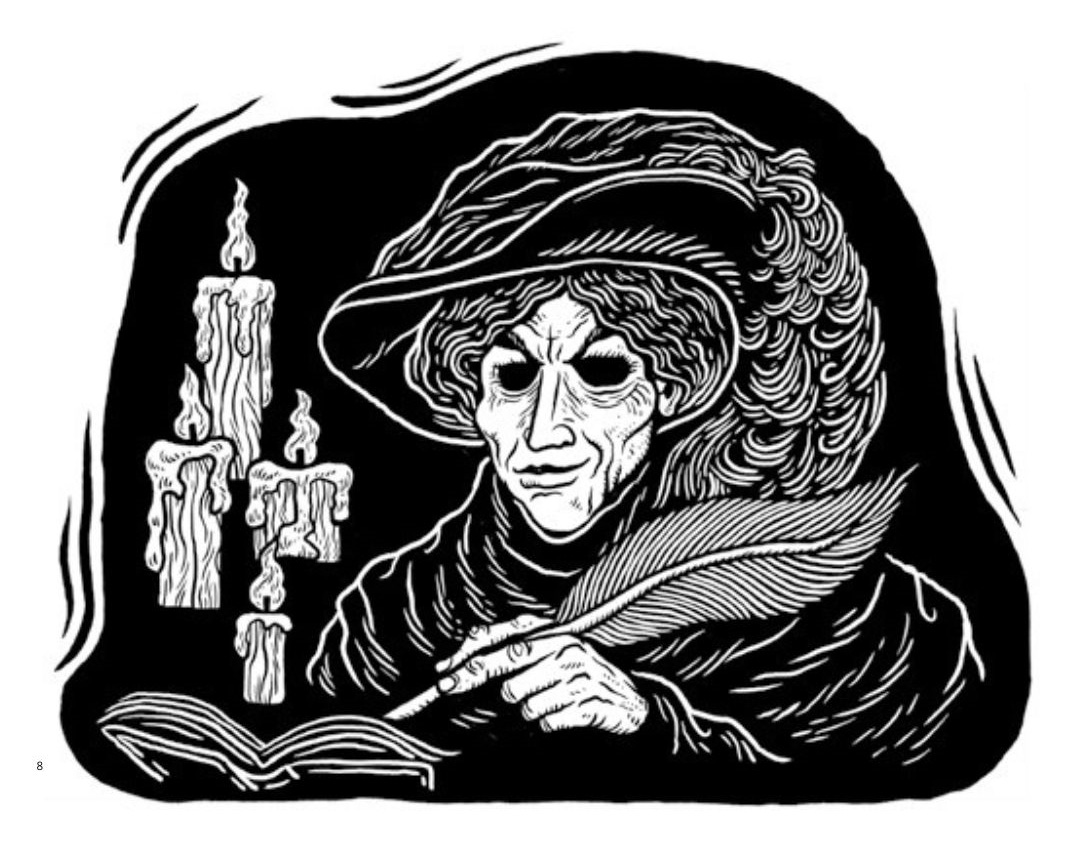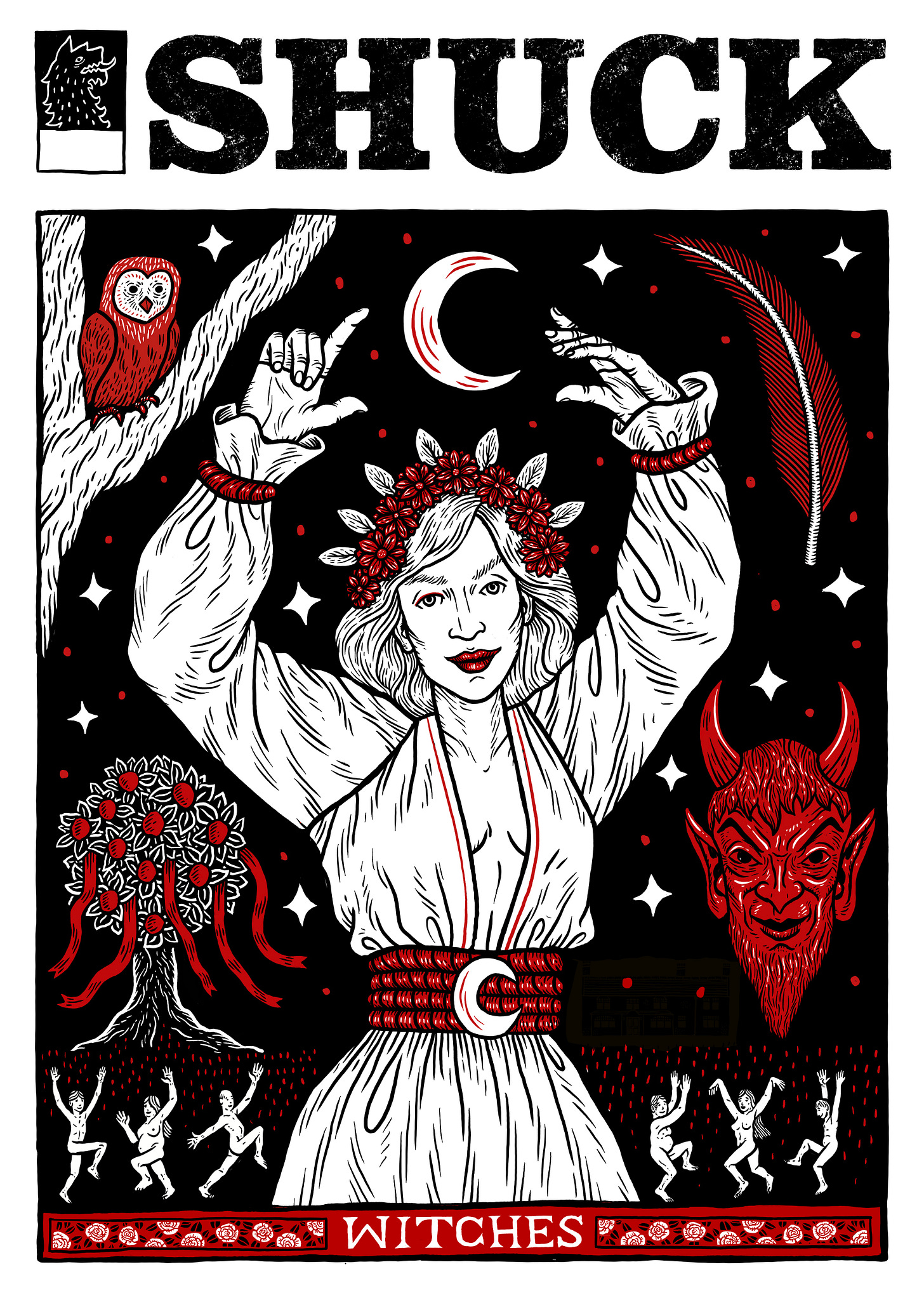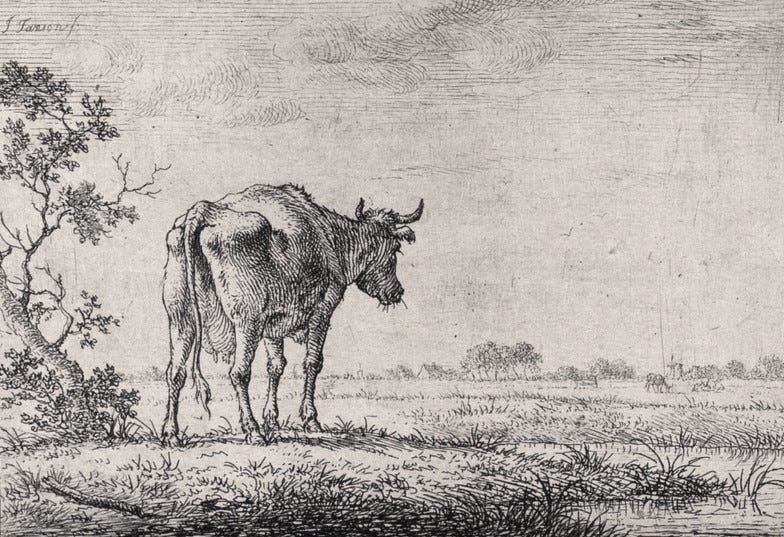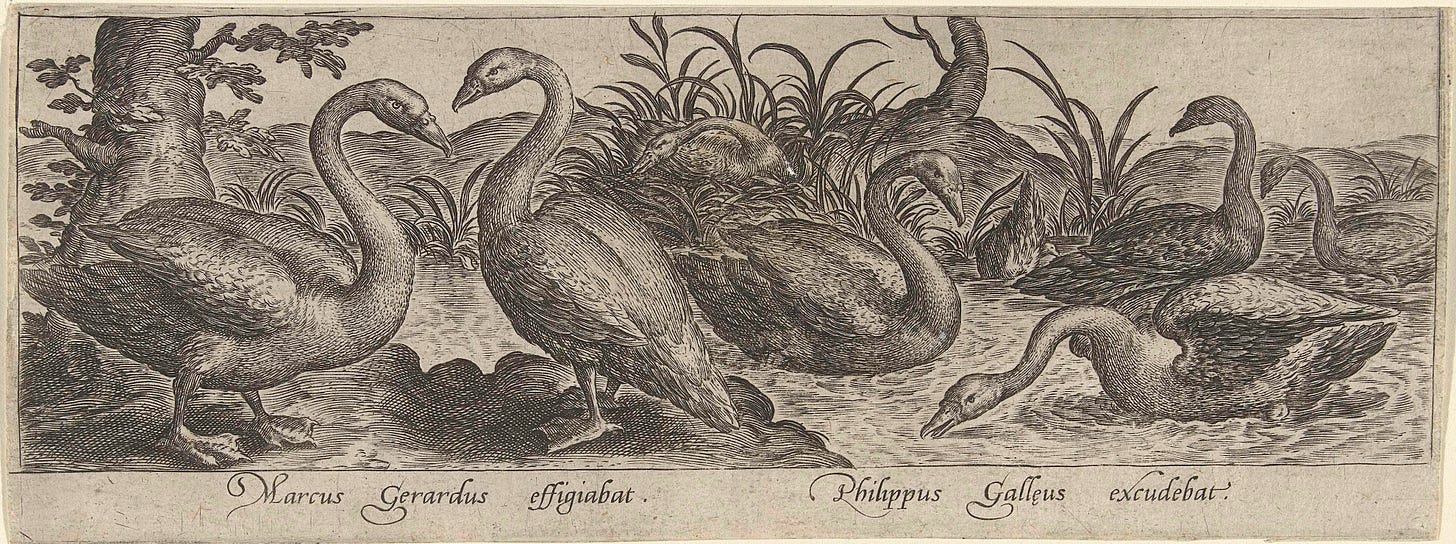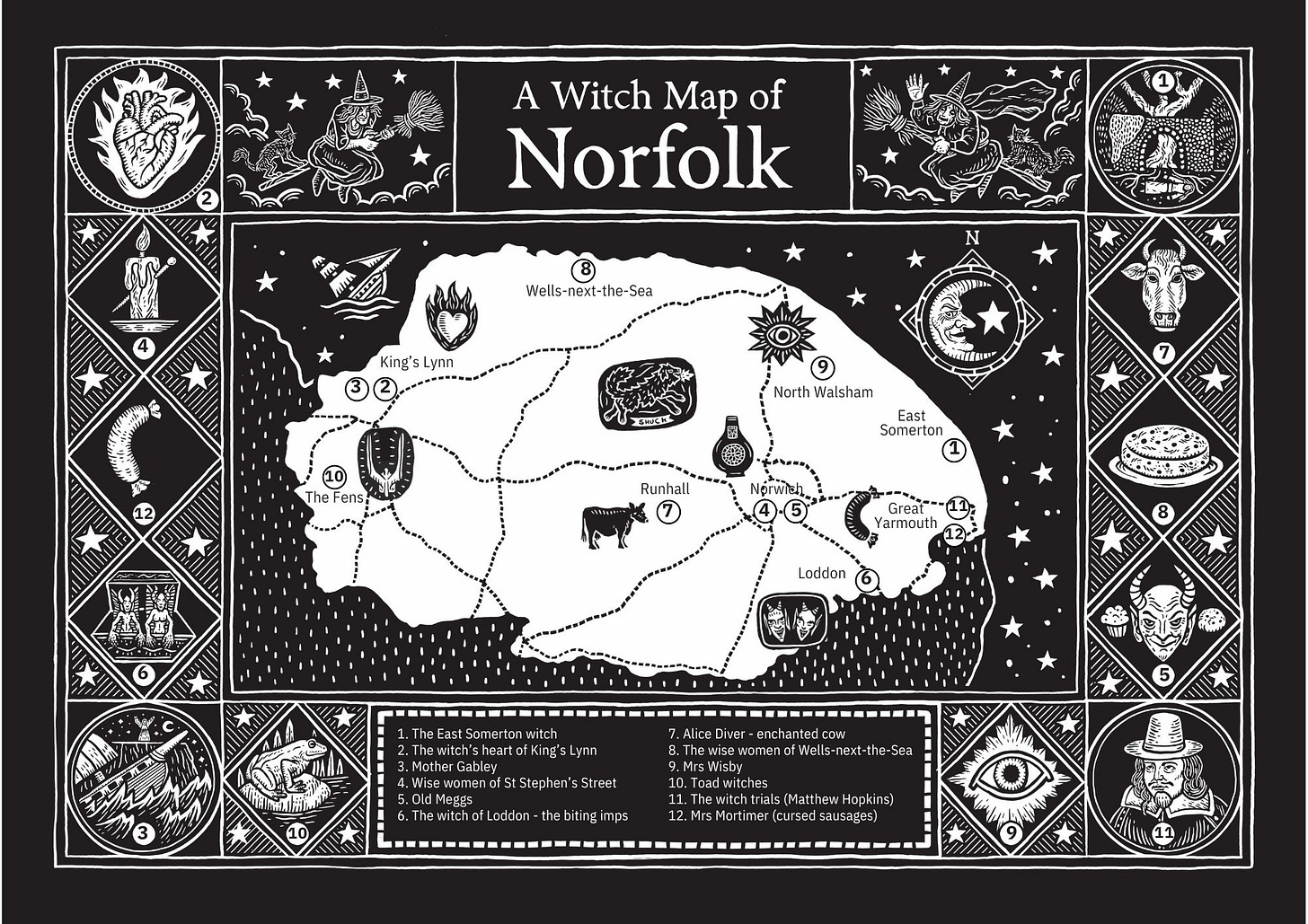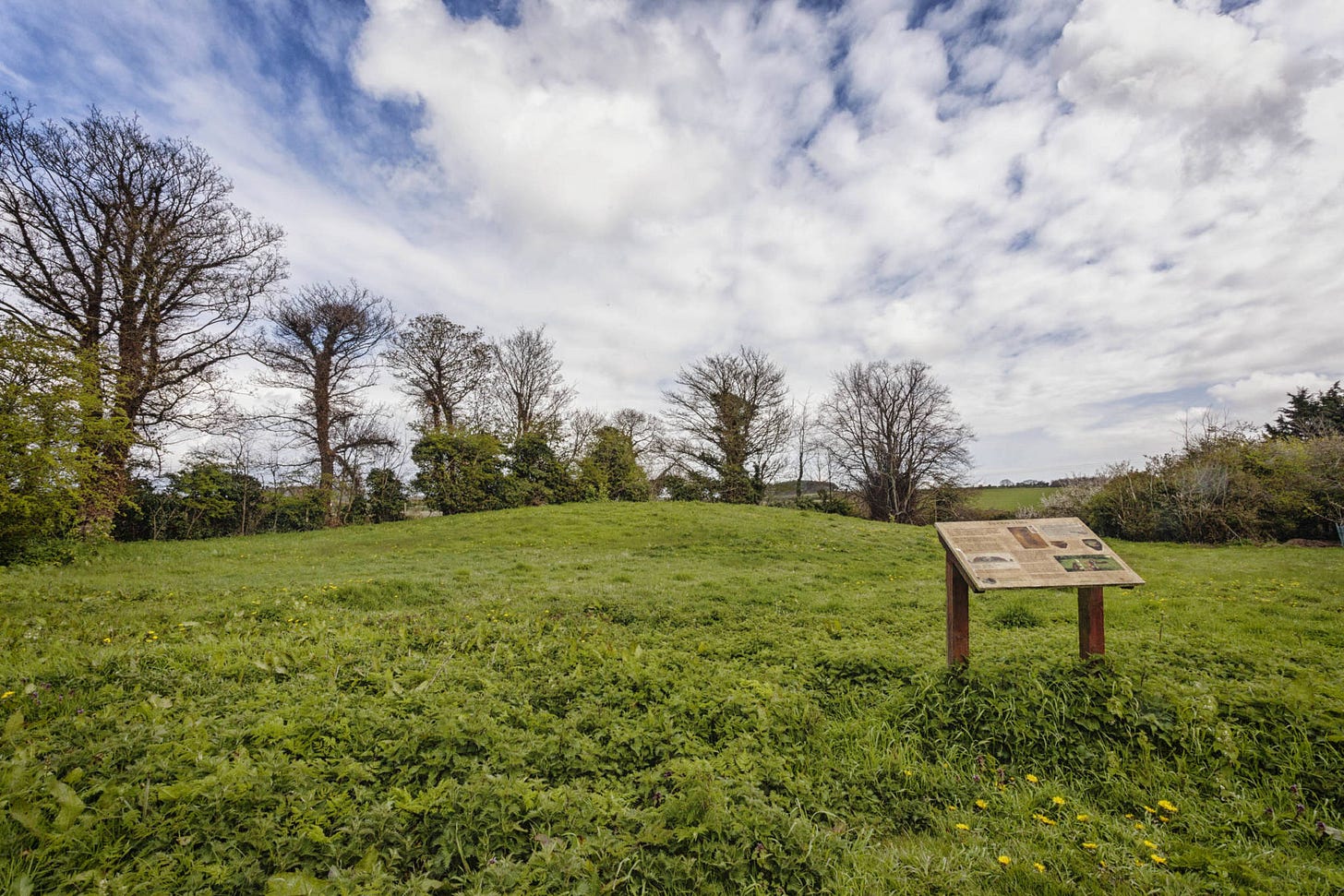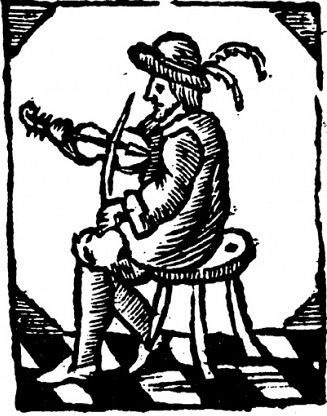Dear ones
Exciting news reaches me deep in the earth: the publication of the latest in our series of dark materials, our new edition of Shuck Zine: Witches.
Ah, the rewarding endeavour of chronicling witches, a pursuit both vexing and gratifying.
Imagine, dear reader, the sheer drudgery of sifting through the dusty annals of provincial superstitions and quaint rural nonsense to unearth tales of crones and their midnight revelries. One must endure the suffocating aroma of mildew in forgotten libraries, and the insufferable company of earnest folklorists who prattle on about broomsticks and hexes.
Yet, I, a woman of discerning intellect and refined wit, take on this mundane task with a sardonic smile. How droll it is to pen florid prose about hags casting spells under the light of a gibbous moon, or to recount the absurdities of villagers who quake at the mere mention of a warted nose. Each article is a masterpiece of verbosity, a veritable tapestry of adjectives and hyperbole, woven together like a silken quilt (if I say so myself, which I do).
The process is almost ritualistic: quill in hand, I embellish the tales and transform the pedestrian into the profound. How delightfully ironic that these simple folk, who lived in fear of the supernatural, now have their stories immortalised by a ghost with a penchant for the dramatic. Ah, the joys of literary necromancy!
The tome is available from Etsy, an unparalleled emporium of the modern age and a vast and wondrous bazaar accessible through the ether.
This mercantile marvel, a veritable Aladdin’s cave, hosts a cornucopia of handcrafted fineries, vintage treasures, and bespoke creations from artisans far and wide and patrons, with the mere flicker of a finger, may peruse a plethora of unique wares, each item imbued with the distinct essence of its maker.
Of all the witchcraft, it is this mind palace brimming with individuality and artistic endeavour, evokes the charm and intimacy of a marketplace of my day, yet it transcends the limitations of time and geography, offering its treasures to a global clientele from the comfort of their own drawing rooms. Find us here: https://www.etsy.com/uk/shop/SHUCKzine
And why should you read? Why should you not? It is not mere idle curiosity that should compel you to read, but the enlightenment that springs from understanding the clandestine arts and the women who, with both reverence and fear, wielded them. In these pages, you shall find tales of wisdom and woe, of persecution and power, embarking upon a journey through the annals of history, guided by one who has borne witness to the triumphs and tragedies of those branded as witches.
They walk amongst us, friends.
Ever yours, Ada
The accused witch of Runhall
In the village of Runhall, at the time when Matthew Hopkins was still a feared name passed down as a threat to those whose work with herbs and magic was seen as witchcraft, two neighbours had a disagreement.
Thomas Cutting alleged, in 1679, that a local woman, Anne Diver, had put an enchantment on his cow and bewitched his family.
He said she had acted after he had refused to give her some herbs from his garden and that, after the refusal, he broke his leg and his wife and daughter both became ill.
As with so many other similar cases, other 'witnesses' began to come out of the woodwork with their own stories which damned poor Anne.
John Calfe claimed that his illness, a year previously, had led him to a cunning man who in turn had shown him the image of Anne Diver in a glass (a case of a 'witch' condemning a 'witch').
John Castleton, who distributed money left to give to the poor of the parish chose to give Anne less than she had been given the year previously and she is said to have warned him that he should "take heed lest some mischief came to him or his."
Elizabeth Pitts went back further in a bid to add fuel to the fire. She claimed that in 1673, she had bought a goose from Diver and was then ill for four months after she ate it - imagine how long Pitts had stewed about that goose, and the sweet taste of revenge. Francis Beale decided to give Pitts a run for her money and told authorities that in 1669, a full decade before Cutting's claim, she had refused to give Anne some beer on a hot summer's day and then, when she drank the alcohol herself, had fallen sick for three weeks.
But all the above witnesses were outclassed by the memory of Susan Major, who rummaged in the attic of time to bring out a story that was 20 years old and involved Diver going to her master's house to beg some meat for her father. Before the meat could be brought out to her, Diver changed her mind and claimed she was too proud to take it: a week later, Susan fell ill, losing her sight and the ability to speak and suffering from stranger fits.
By the time that Anne was accused, accused witches in Britain spent a year in prison for a minor offence and faced death for a second -within 50 years, the same crimes would be dealt with the same penalties given to vagrants and con artists.
Across the Channel, however, the witch-hunting fever was burning out of control. In the same year that Anne was accused, the Liechtenstein witch trials began and around 100 people were killed over a three-year period and in France, Peronne Goguillon - an alleged French witch - and her accomplices were burned at the stake for witchcraft.
As for Anne, the trail runs cold after the accusations she faced in court, leading to hope that she lived to annoy her neighbours for some time to come.
A new edition of Shuck
From the whispers of history and the shadows of time, we bring you Shuck 7: Witches. And what a magnificent collection of treasures it is – learn about witch bottles and witch stones, the very last witch trial in Norfolk (held during World War 2), the Kittywitches of Great Yarmouth and how to make your own witch cake. A warning: the witch cake will require the collection of urine. There are stories of farmers and witches, a witch’s curse that cast a shadow over a Norfolk village for centuries and see the Witch of East Somerton (we know her name but will not share).
Then we have a map of Norfolk witches, a spell to bring magic to you and your home, we learn of Norfolk’s male witches and follow the county’s first witch trial where two ‘hill hunters’ were accused of enchantment. Then there are familiars, Toadmen, your own paper doll witch and our cover story, that of Monica English, Norfolk’s High Priestess of the Grey Goose Feather Coven who practised until only a few decades ago. Let us welcome you in: Shuck’s latest creation awaits you.
The witch of Eye in Suffolk
It is never wise to try to get the better of someone who makes a living from being cunning – no good comes of tricking someone whose business is magic.
This story is a cautionary tale about being careful what you wish for and, in turn, paying for services rendered.
The book this story hails from is a paragraph in itself: The Vocabulary of East Anglia: An attempt to record the vulgar tongue of the twin sister counties of Norfolk and Suffolk, as it existed in the last twenty years of the eighteenth century and still exists; with proof of its antiquity from etymology and authority by Reverend Robert Forby, published in 1830.
Having drawn breath, we may begin.
Old Nan Barrett was a reputed witch or cunning woman who worked in Eye in the late 1700s and whose words of wisdom were sought for decades.
People would travel for 30 or 40 miles to ask her advice on a wide range of matters ranging from illness to romance, love to hatred. She could also draw up horoscopes.
On one occasion, a farmer’s wife had lost some feathers – useful to pack mattresses and quilts – and quickly made her way to Eye to consult Nan Barrett to discover where the feathers were and if she would ever see them again.
Nan quickly assured her that the feathers would return and that she had no need to worry – she then extended her palm for it to be crossed with silver.
Happy with the answer she had been given, the farmer’s wife turned on her heel and left, laughing as she heard Nan tell her that although the feathers would return, she would soon wish they had stayed lost.
Delighted that she had outwitted a witch, the woman came home and she and her maids began the long process of milking the herd.
As she bent over the pail, the farmer’s wife heard a noise like beating wings and, as she turned her head to see what was making the noise, she saw her feathers flying into the yard like a snowstorm and settling into the pails of fresh milk.
Both milk and feathers were ruined and the tale spread across Suffolk that Nan Barrett’s threats were not to be taken lightly.
Here be witches for September:
Make your own witch bottle - https://www.heritage.norfolk.gov.uk/record-details?TNF935-Make-a-post-medieval-witch-bottle-(Crafty-Idea)
Great Yarmouth’s link to Salem: https://salemwitchmuseum.com/locations/william-and-joanna-towne-home-site-of/
Witch work for September: The Naturally Modern Witch’s Almanac: September - Naturally Modern Witch (naturallymodernlife.com)
Somewhere strange to visit in Norfolk this month: Fiddler’s Hill
The legend of Fiddler's Hill tells the story of an ill-fated violinist who decided to investigate a ghostly monk who would emerge each night from a tunnel running between Binham and Walsingham – it didn't end well for him.
For generations, a tale had been told of a ghostly black monk who was seen pacing along a secret tunnel which connected Binham Priory to Walsingham (other reports say it was connected to Blakeney Guildhall, or to both) and who would emerge during the hours between dusk and dawn to haunt the priory ruins.
In a report from the Norwich Evening News in April 1935, it stated: "The inhabitants of Binham are now discussing the report of the appearance of the 'ghost' of a black-hooded monk in the Parish Church which was the nave of the Priory in olden times. The Vicar said that he had been told the story in confidence by a lady of position. Some time ago this woman was present at an evening service in the Parish Church, and saw a figure on a ledge near the church door.
"She watched the phantom, which resembled a Benedictine monk wearing a black cowl, walk slowly along the ledge. After walking along the ledge for the length of the church the spectre disappeared. During its journey the figure is said to have climbed some spiral steps…Mr Carroll went on to say that villagers had stated that they had seen the figure of a Benedictine monk near the entrance to the Priory - the Gaol Gate."
Close to the Priory is Fiddler's Hill burial mound at Warham, an ancient Bronze Age earthworks in the valley of a tributary of the River Stiffkey.
Legend has it that one day, a fiddler and his dog wandered into the village of Binham and, after hearing tales of the ghostly monk, decided to investigate for themselves and collected a band of villagers to watch them enter the tunnel with a view to locating the Priory's spectral visitor.
Before he disappeared into the tunnel, he instructed villagers to listen out for his fiddle playing so they could follow his progress as he walked underground - as he strode into the darkness with his dog, he struck up a tune and villagers heard the strains of music as they followed his route above ground.
But at Fiddler's Hill, the music suddenly stopped. Listen as they might, the villagers couldn't hear the fiddler's tune but no one was brave enough to venture into the tunnel in order to see if the fiddler was safe - after a long wait, the fiddler's dog appeared in a sorry state: his tail between his legs, shivering and whining.
The Fiddler was never seen again.
The same night, according to legend, a violent thunderstorm battered Warham and Binham and when the villagers emerged from their homes, they discovered that the passage entrance had been completely destroyed - as years passed and the story was told over and over, the hill became known as Fiddler's Hill in honour of the intrepid ghost-hunting musician.
The Thetford and Watton Times of April 15 1933 added an extra layer of intrigue to the story: "Is the old legend of Fiddler's Hill, Warham, true?" it began, "What appears to be surprising confirmation of it has been brought to light by Norfolk County Council men working on the roads. They have discovered in a mound at the crossing of the Wighton and Stiffkey road and the Binham and Warham road, the skeletons of a man and a dog."
In fact, three skeletons were found at the crossroads: those of a man, a dog and a young girl.
Today, Fiddler's Hill is in the hands of local heritage group the Norfolk Archaeological Trust, as part of its portfolio of 10 historic sites which also includes Caistor Roman Town, Burgh Castle and St Benet's Abbey, which protects important archaeological sites and landscapes and makes them more accessible for people to visit.





